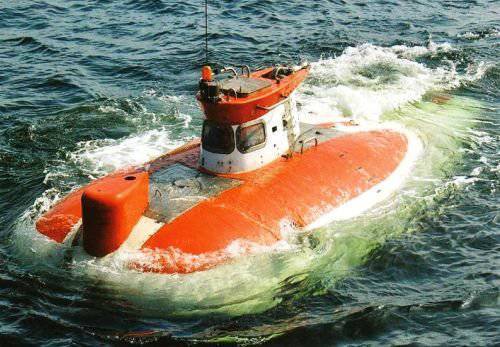The structure of the Navy introduced a deep-sea unit "Consul"

In St. Petersburg, after 9 of September 2011 of the year, state tests were successfully completed, a solemn transfer ceremony took place to the Russian Navy of the deepwater unit “Consul”, whose name can be decoded as “sulfide concretion”.
First Deputy Minister of Defense of Russia, Chief of the General Staff of the Armed Forces of the Russian Federation Nikolai Makarov approved the act of the state commission on the adoption of the deep-sea autonomous apparatus "Consul".
As previously planned, in November, the “Consul” was introduced into the Naval Fleet by order of the Commander-in-Chief of the Russian Navy.
The self-contained inhabited deep-water apparatus “Consul” successfully completed a dive to a depth of 6270 meters, which is a record for domestic apparatuses. The dive took place in the North Atlantic, successfully completing state tests.
It is worth noting that the “Consul” deep-water vehicle, in contrast to the Mir-1 and Mir-2 bathyscapes built in Finland, was designed and built on Russian territory.
It was developed at the St. Petersburg Maritime Engineering Bureau "Malachite", and then, on request, the Russian Ministry of Defense was built at the Admiralty Shipyards of Russia.
The device is designed for rescue and underwater technical work, geophysical, geological and other studies conducted at depths up to 6 thousand meters, as well as for installation on beacon-responders on underwater objects, delivery to the ground and lifting to the surface of equipment weighing up to 200 kg “Consul” with the help of a manipulator complex is able to carry out preparatory work for lifting various objects with lifting means of a carrier ship.
The device will be controlled by two crew members, who will be able to take photo and video, observe the underwater world, operate a mechanical manipulator, observing from three portholes located in the bow.
The high-strength titanium alloy from which the apparatus body is made was specially developed at the Central Research Institute of Structural Materials "Prometheus". Its thickness is up to 100 mm, width and height - 3,9 m, length - 8,4 m, and weight - 26 tons. Autonomy up to 12 hours, speed - node 3, crew composition - hydronaut 2-3.
Information